My apologies for the length of time that has elapsed since the last blog post but my intent is to be more punctual as we head into the New Year….perhaps that should even be a resolution!
One of the wildlife photographer’s most prized animal to capture is the moose and fortunately I’ve been able to spend some time photographing them in Algonquin Park which you can see via this link to a previous blog post. This fall the goal was to photograph a Bull Moose during the rutting season; you know, that classic Bull Moose with a huge rack of antlers looking directly into the camera. To that end I spent two consecutive Fridays in the park last month looking for that elusive moose and unfortunately was unsuccessful on both days. Even when a plan doesn’t unfold as expected it is always a pleasure getting out of the city and spending time enjoying the outdoors. The bonus was seeing an Eastern Wolf on the first Friday and a Red Fox the second as well as having the privilege to photograph both of them.
The Red Fox is common in Ontario and in fact common around the entire Northern Hemisphere. It is the largest of the foxes and a truly beautiful animal with a heavy red coat and seemingly oversized tail.
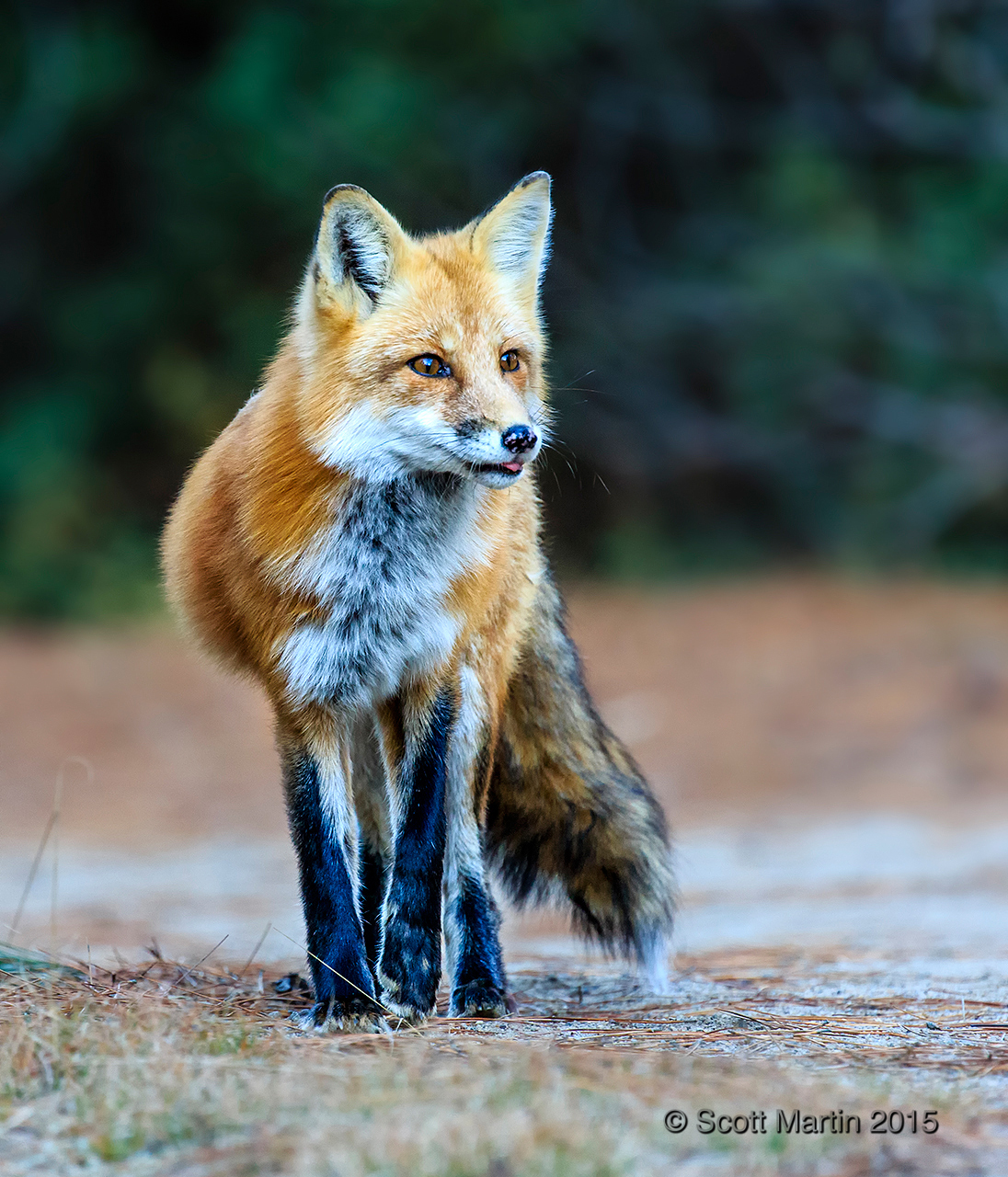
.
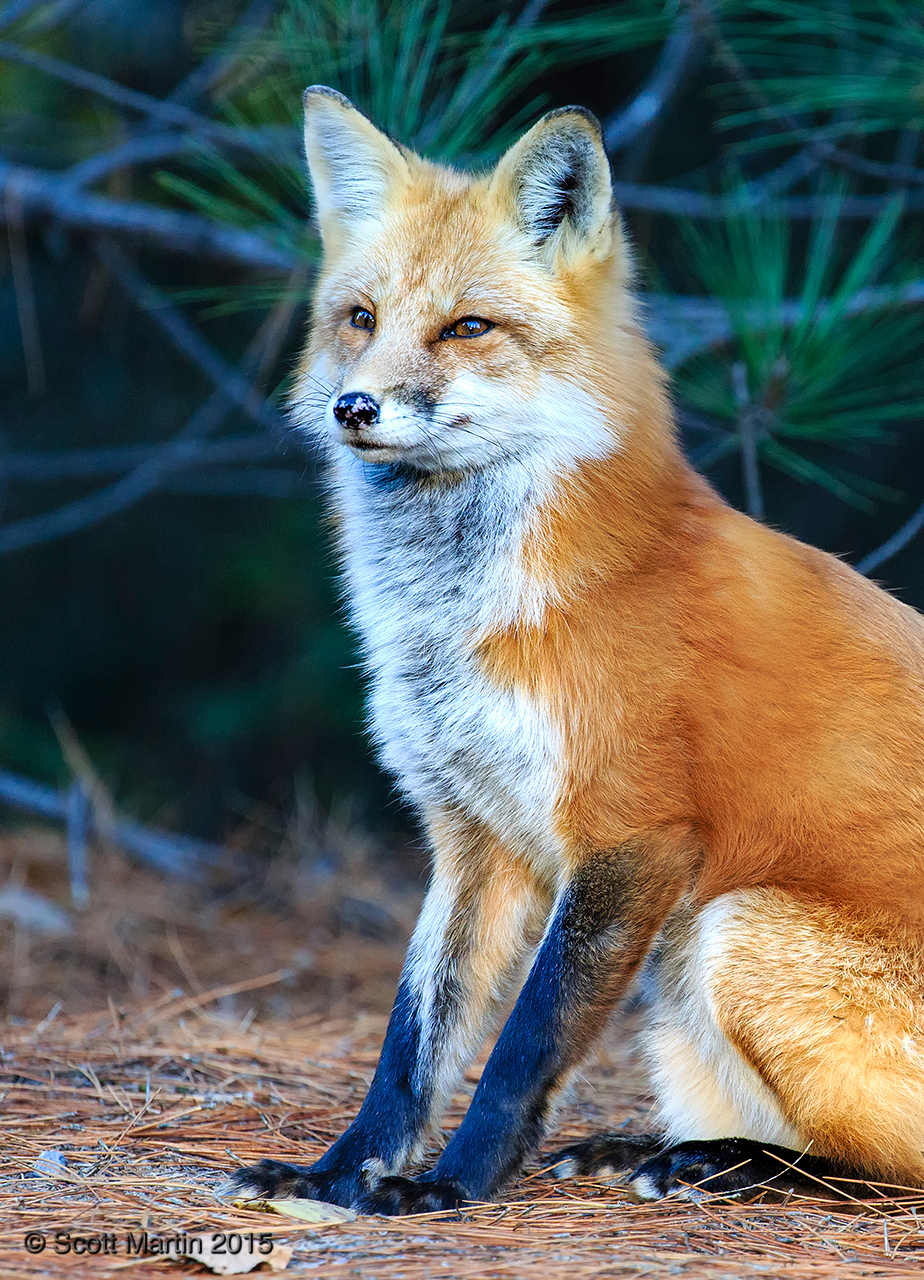
.
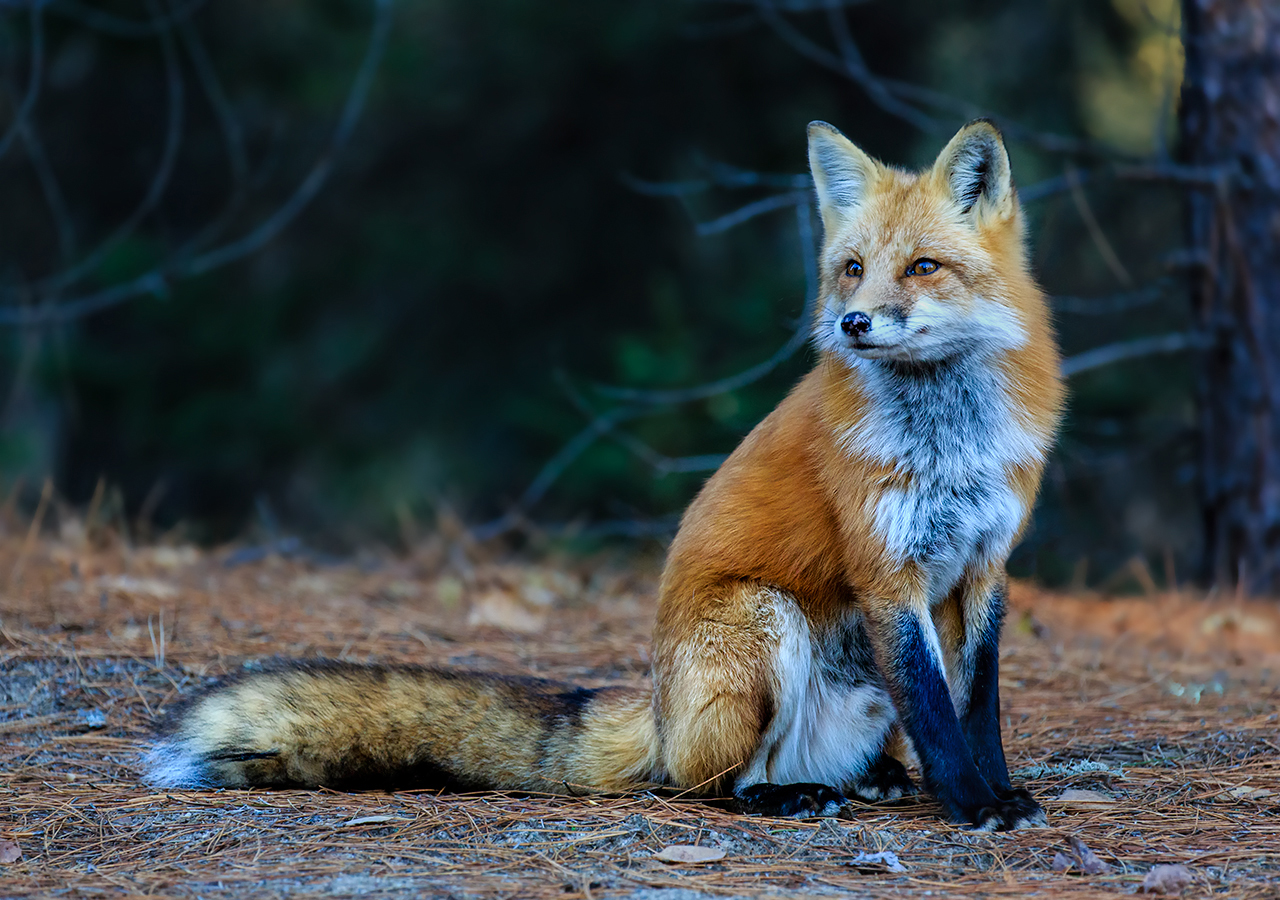
Who can deny what a majestic looking animal they are.
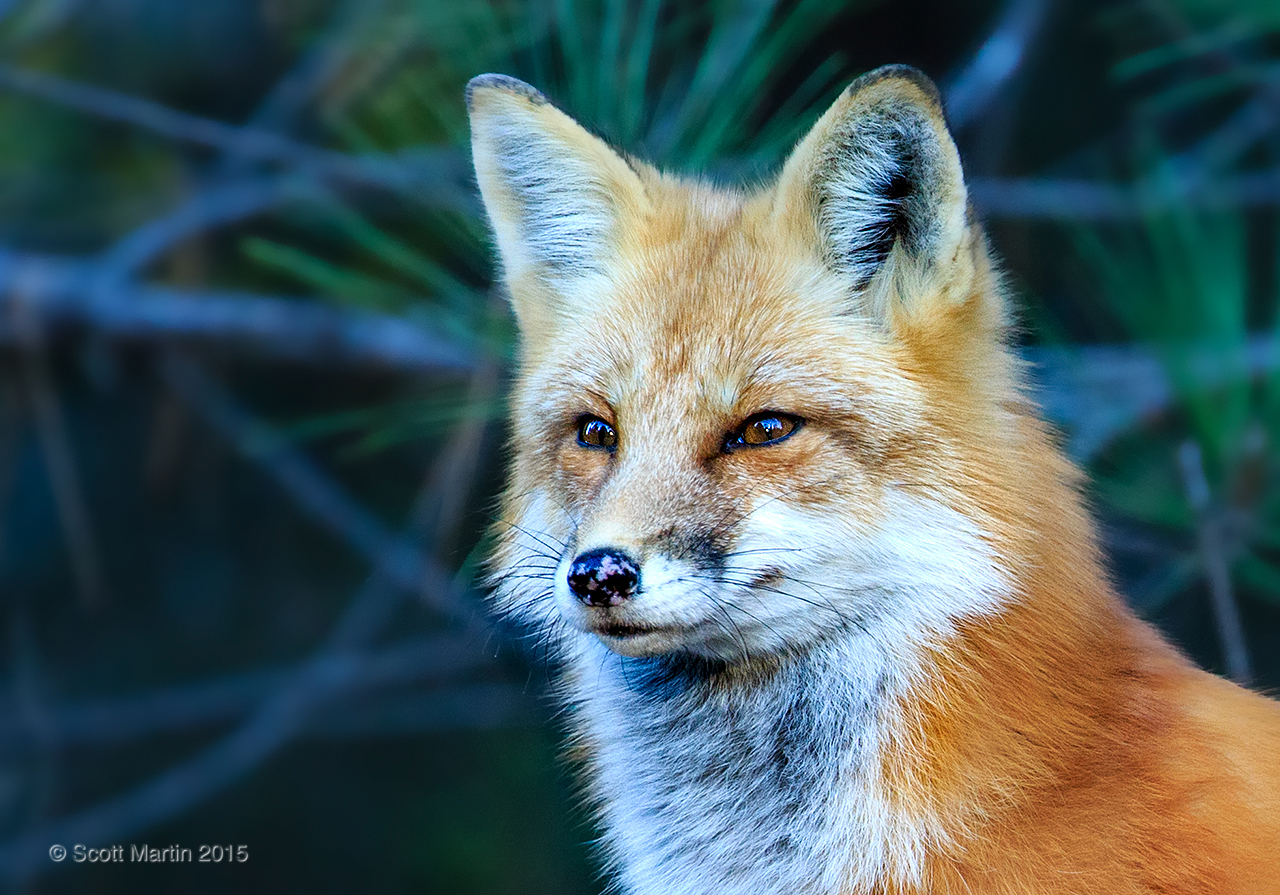
Animals that are introduced into foreign ecosystems generally (if not always) upset the delicate balance that exists within that ecosystem, often with devastating results. The introduction of the Red Fox to Australia in the 1830’s is such an example and the 6.2 million Red Foxes that now live in Australia make it one of the most damaging invasive species on that continent.
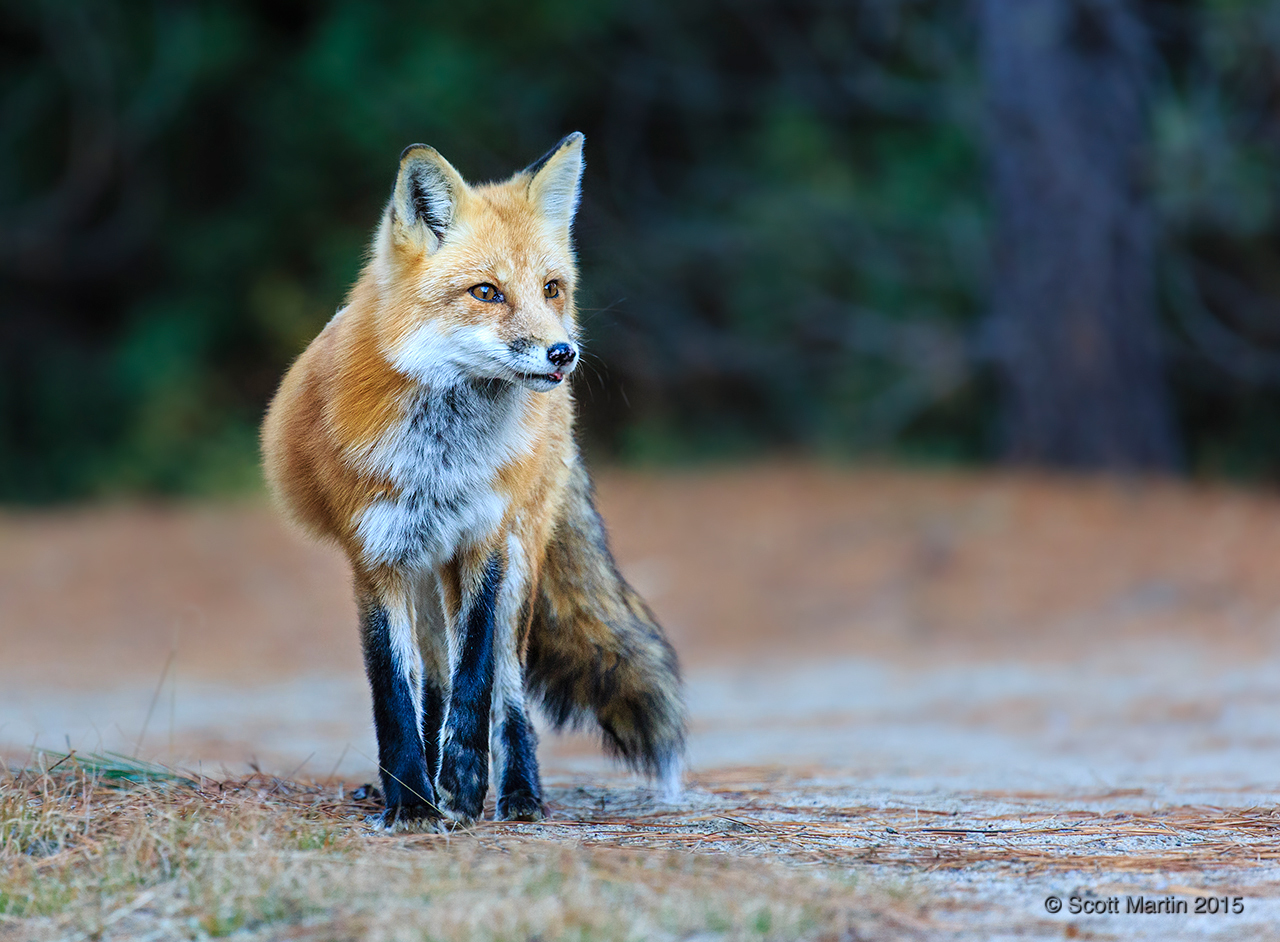
The Red Fox is a predator that typically eats small rodents, but will also take rabbits and game birds given the opportunity.
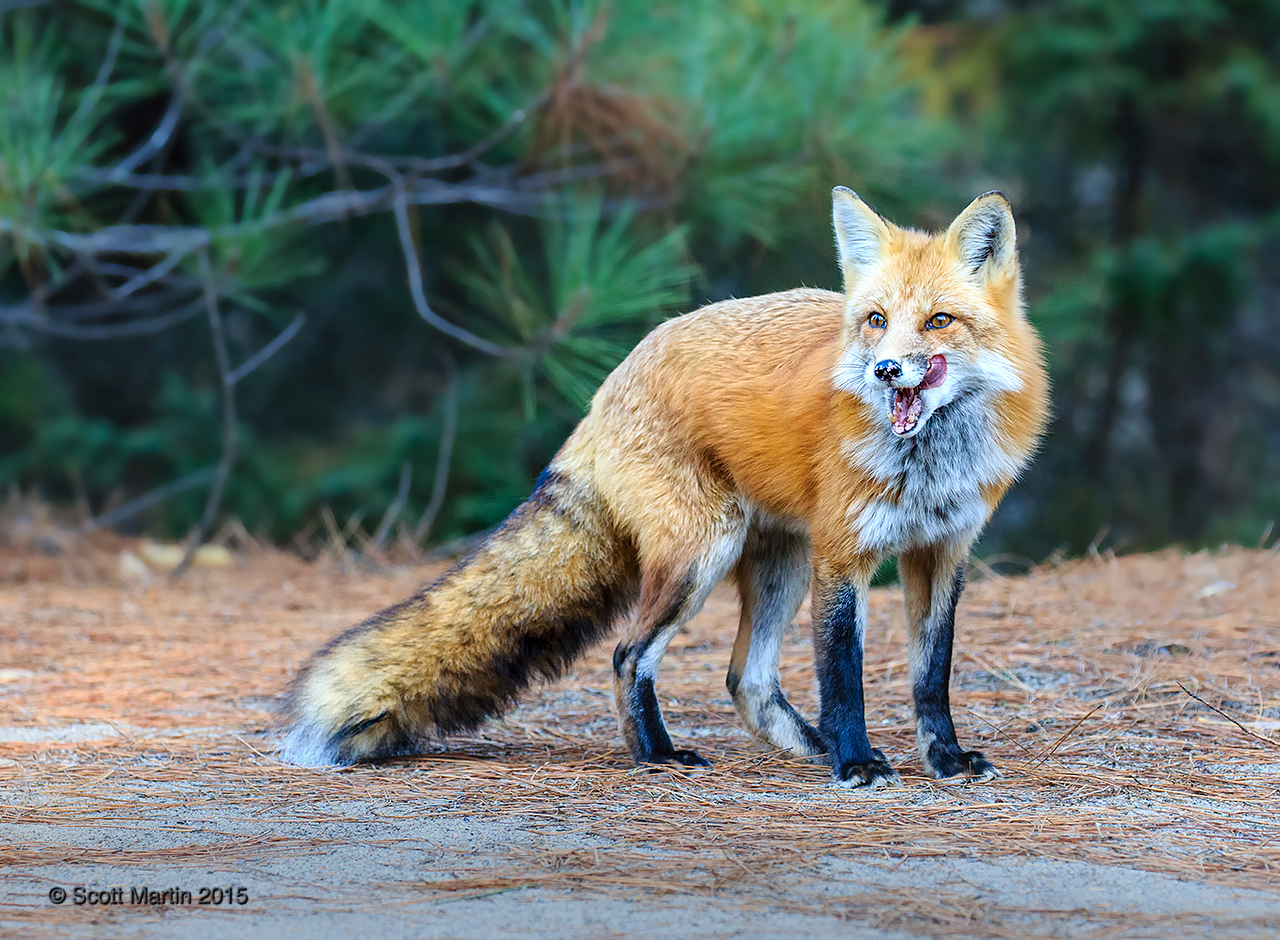
The Red Fox itself is a target of the larger predators in its ecosystem, which in Ontario includes wolves, coyotes and even some of the uncommon big cats.
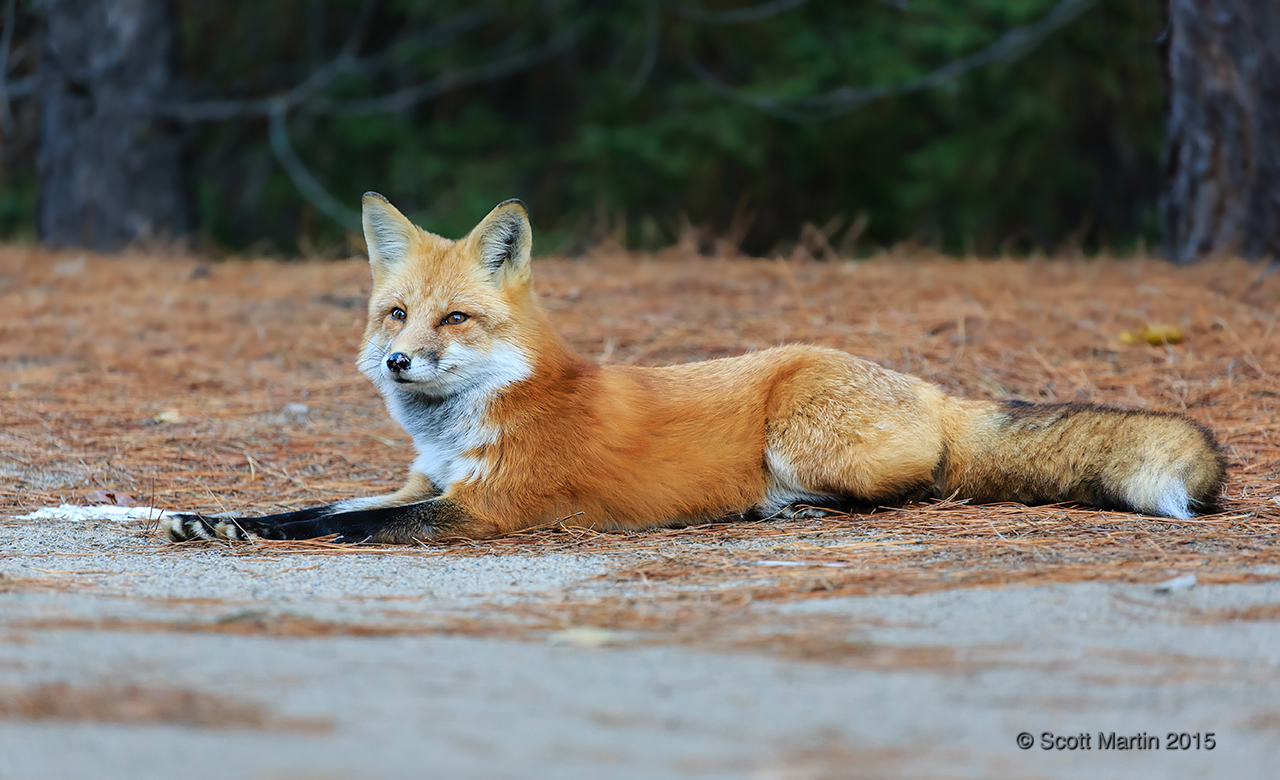
The fox images in this post were taken late in the day as the light started to subside so an ISO of 2000 was required in order to arrive at a high enough shutter speed. For this reason I also chose the 5D Mk III body which is very good at high ISO’s. The lens was the new Canon 100-400mm IS zoom which is proving to be a wonderful lens. A number of other Red Fox images can be seen in the Wildlife Gallery.
The Eastern Wolf is a member of the dog family and is an important part of the Algonquin Park ecosystem, which is unique to the rest of the province as the wolves of Algonquin are not culled and are protected within the confines of the park. Although Deb and I have spent countless days in Algonquin Park over the years this was the first time either of us had seen a wolf in the wild and it was an unexpected pleasure.
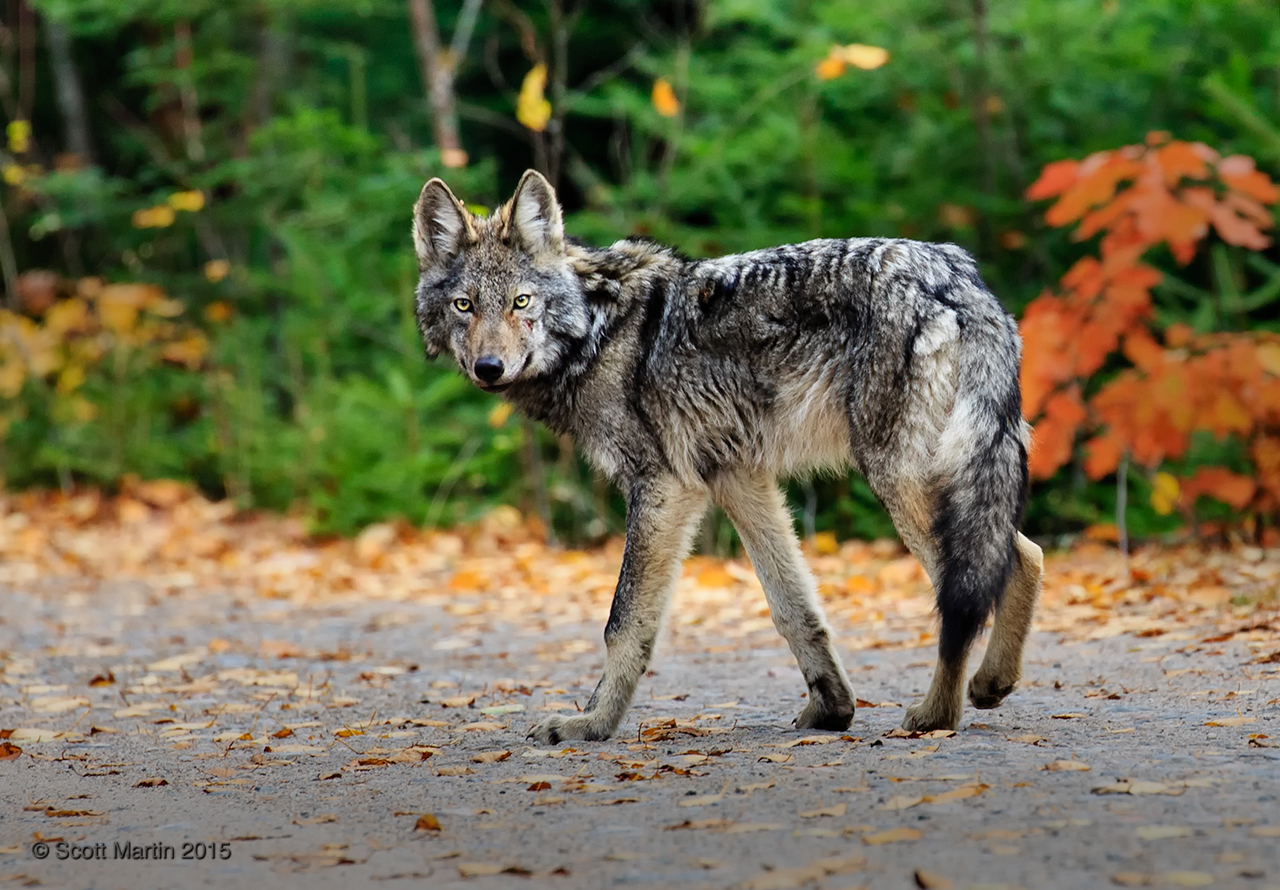
Wolves typical live in packs of five to seven in Algonquin Park. Pack size is usually determined based on the primary food source of the wolves. In the park the wolf’s primary food source is the White tailed deer, which is of a size that can only support five to seven wolves, hence the average pack size in Algonquin Park (the two secondary food sources are the moose and the beaver). In parts of Canada where the primary prey is much larger (i.e. Bison) the packs are greater in number.
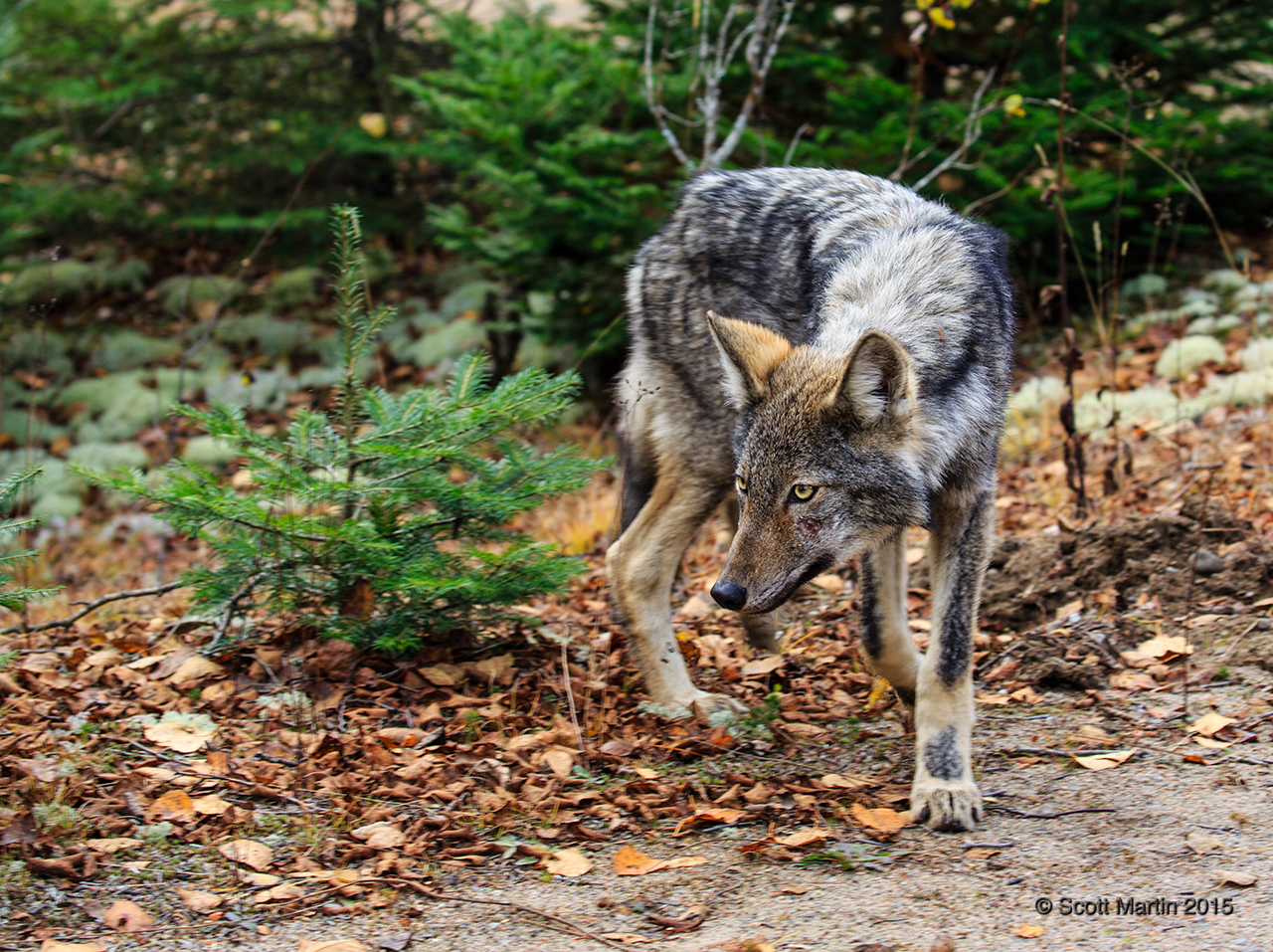
This wolf was probably a lone wolf or sigma wolf. The lone wolf is one who has left the comfort of his or her pack, by choice or eviction. Either way the lone wolf must fend for itself, which makes it difficult, if not impossible, to hunt the White tailed deer. Thus the lone wolf will scavenge for food and often become a nuisance if near a farm or community. Although this wolf has a healthy looking coat, it does appear thin and is probably is less than the average 30 kilogram weight of an Eastern Wolf.
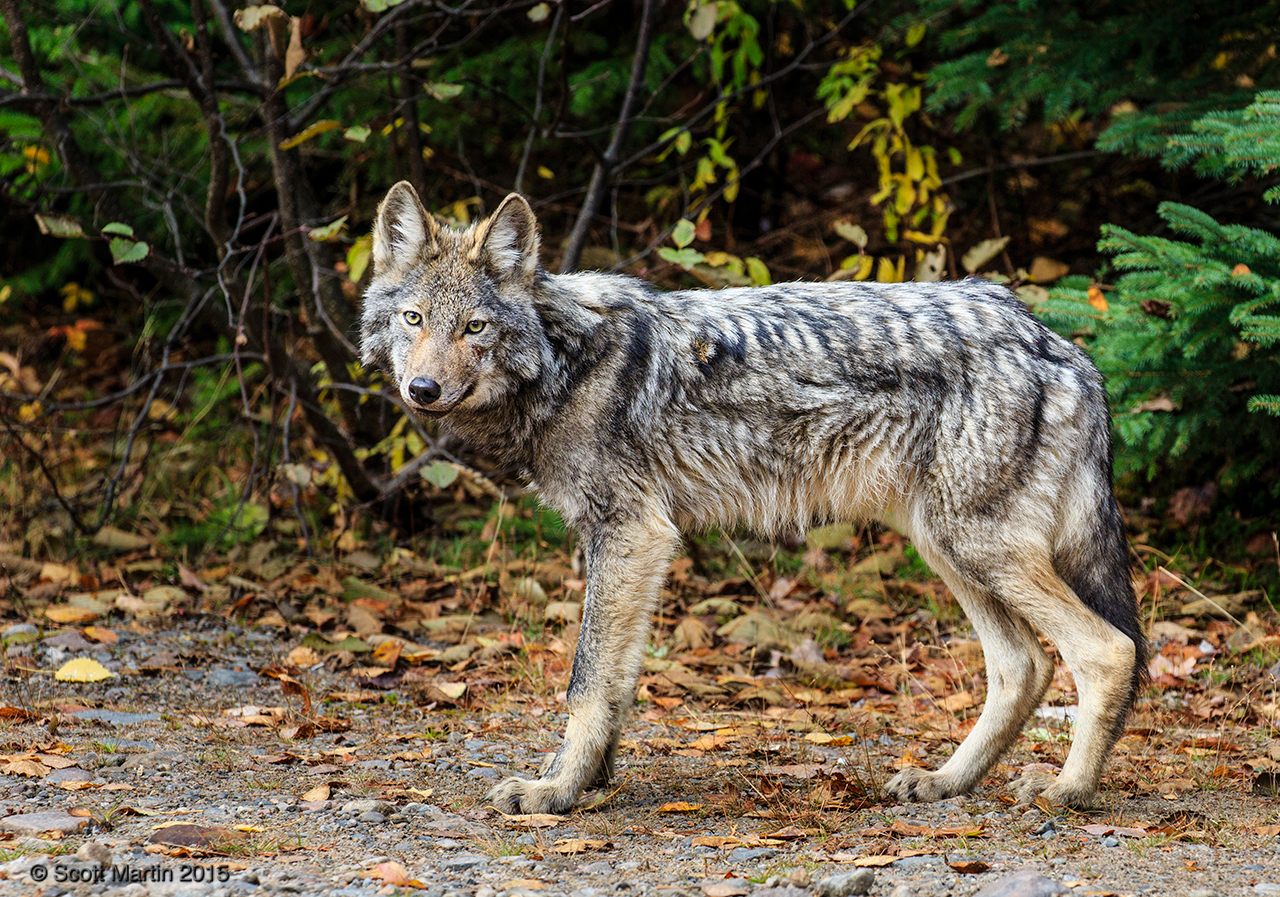
There is often significant discussion and disagreement around the identification of wolves and coyotes and the differentiation between the two. The fact that this animal was seen in Algonquin Park virtually assures that it is an Eastern Wolf and not a coyote. Coyotes tend to prefer more open areas (farming communities) and don’t hunt well in heavily forested regions. They are also preyed upon by wolves when then enter their domain. Having said that, there were coyotes that interbred with Eastern wolves in Algonquin Park, most likely in the mid to late 1800’s when extensive sections of the park were cleared by logging operations, providing a more suitable environment for the coyote than what exists today. So although this animal may contain some coyote DNA it is surely an Eastern Wolf.
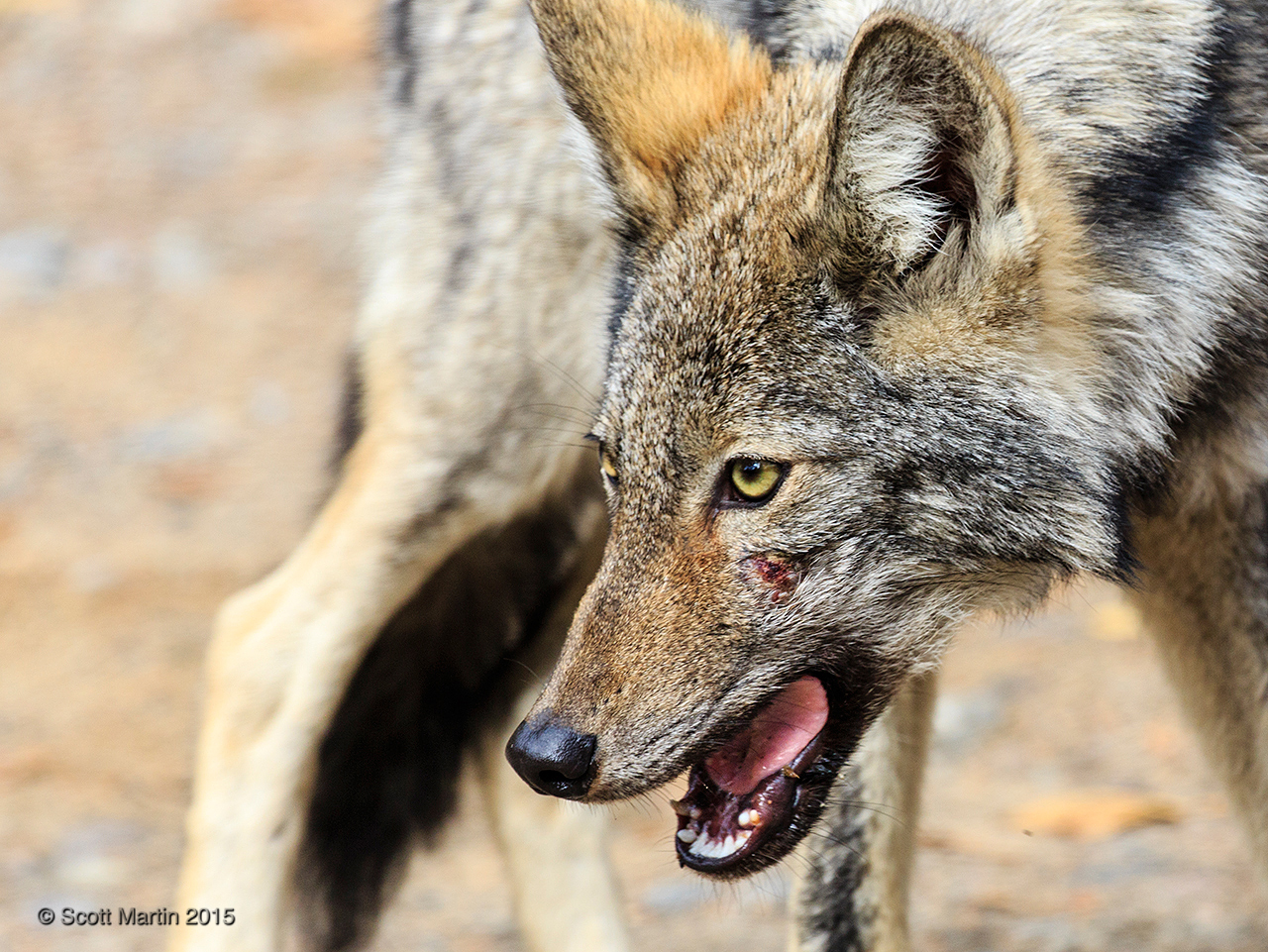
The eyes of the wolf create an intense stare.
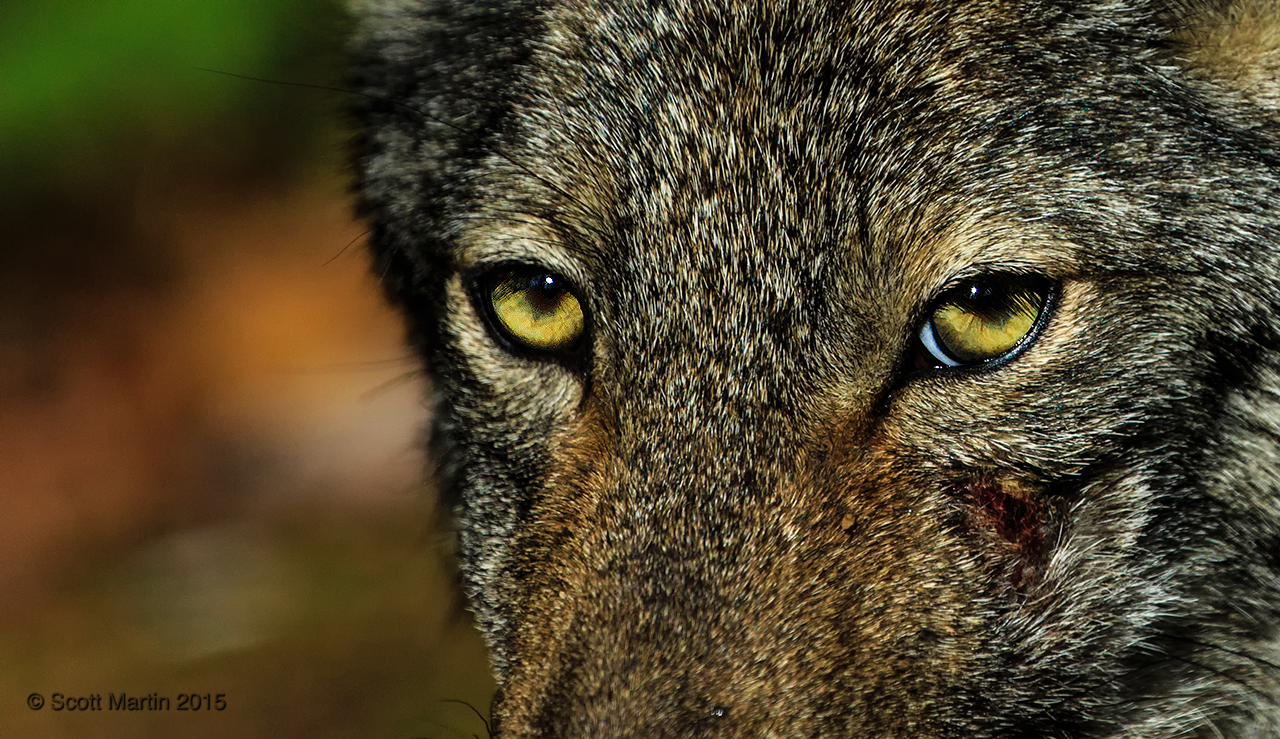
.
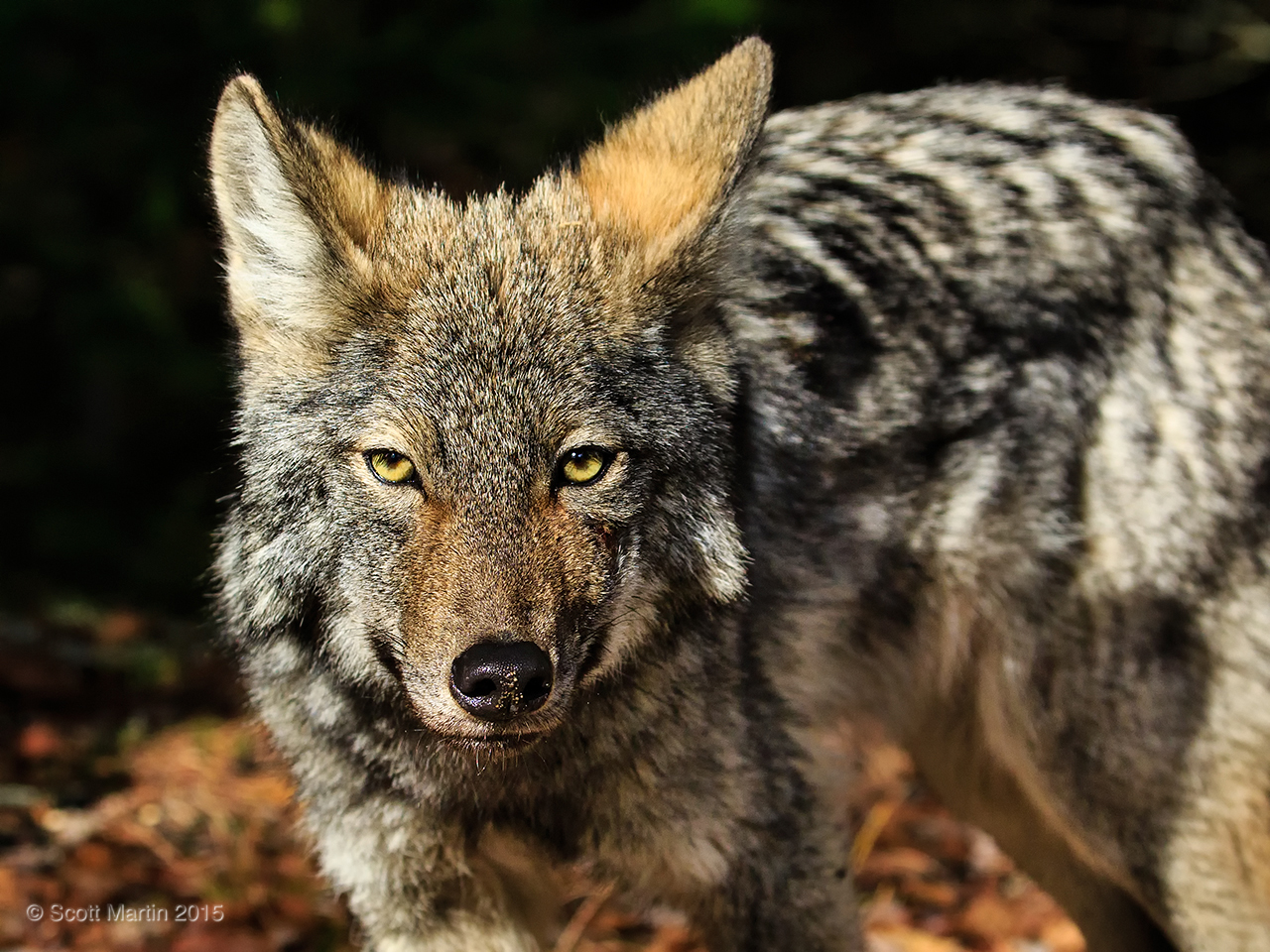
Wolves will actually migrate during the winter and follow the White tail deer to their winter deer yards. On the east side of the park the deer head to the Round Lake area and are followed by the wolves, where they were vulnerable to being shot by farmers and hunters. Recognizing the human threat to the wolf population, hunting bans were placed in thirty townships surrounding Algonquin Park in order to protect the wellbeing of the wolves.
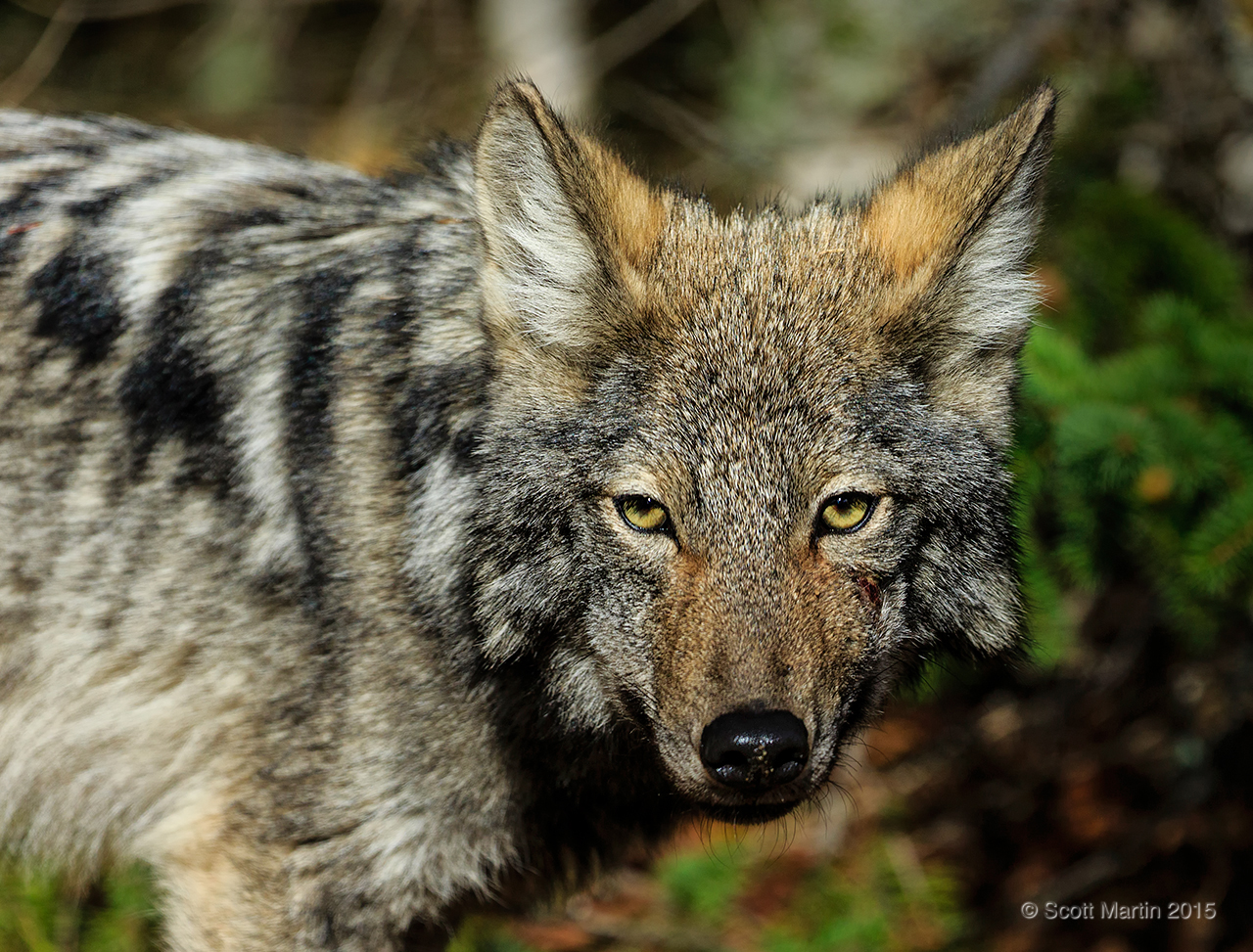
They are certainly a beautiful animal.
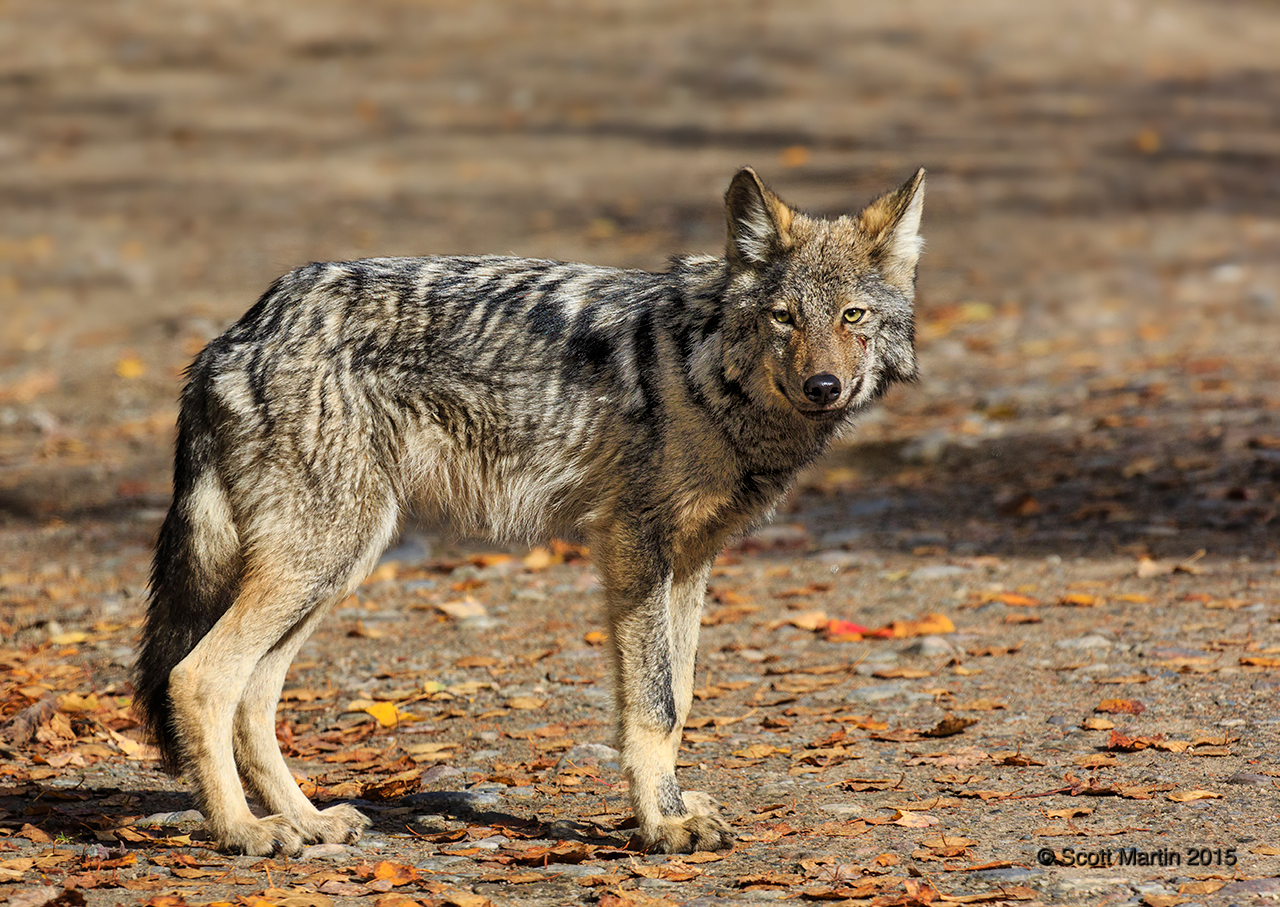
More wolf images can be seen in the Wildlife Gallery of the website.
I trust you have enjoyed this brief look at two of the smaller predators that occupy very important positions within the Algonquin Park ecosystem. As always, your questions, comments and shares of this post are very much appreciated.

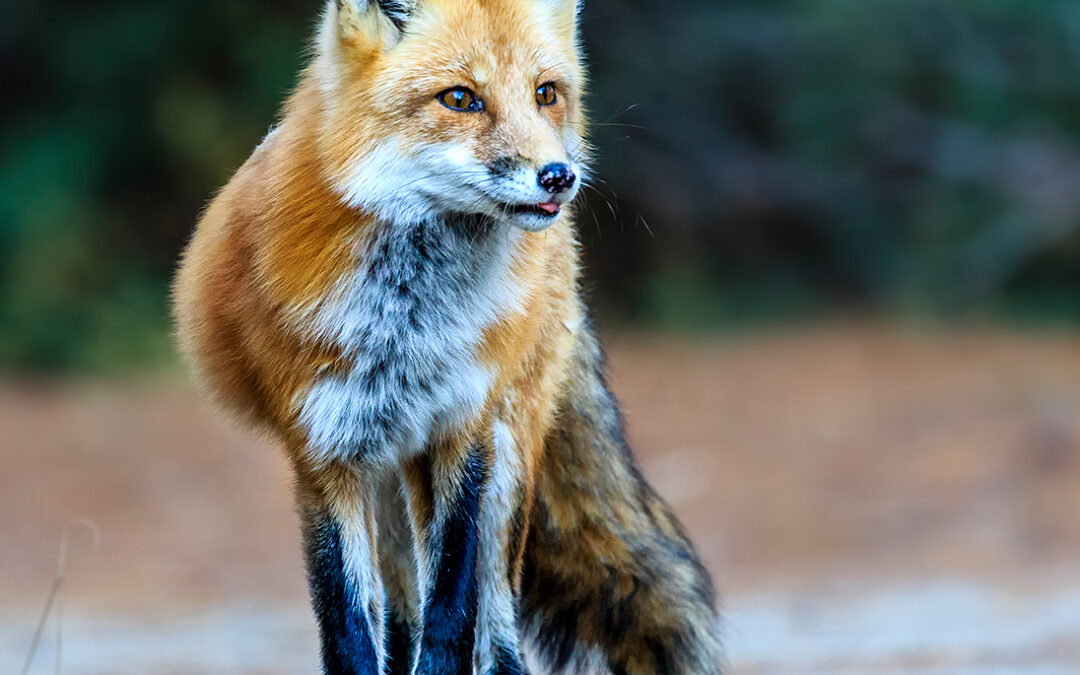
Great pictures Scott!! Very interesting blog. In as many times as we’ve been through the Park, I don’t recall ever having seen a fox or a wolf.
Thanks Dad. Deb & I have seen foxes before but never a wolf. It was nice to see them.
Terrific images as always Scott. The red fox was certainly the highlight of our day together and perhaps next year we will be successful in getting that iconic moose image 🙂
Thanks Arni and I know we will never stop trying for that moose image until we get it!! Nevertheless we had a great day looking for one this year.
Hi Scott,
Great shots of this character. We went out spotlighting at the weekend and saw app 10 fox cubs, no rabbits & a few possums. The Foxes at the moment are getting to plague proportions & coming into the built up areas for food.
In researching this blog I read how the introduction of the fox into the Australian ecosystem has created huge problems over the years Rob. When we alter God’s design it doesn’t work out well! One of our favourite animals is one of your most disliked.
The wolf doesn’t look very happy! !
You may be right Carol, it probably doesn’t like being out of its pack.